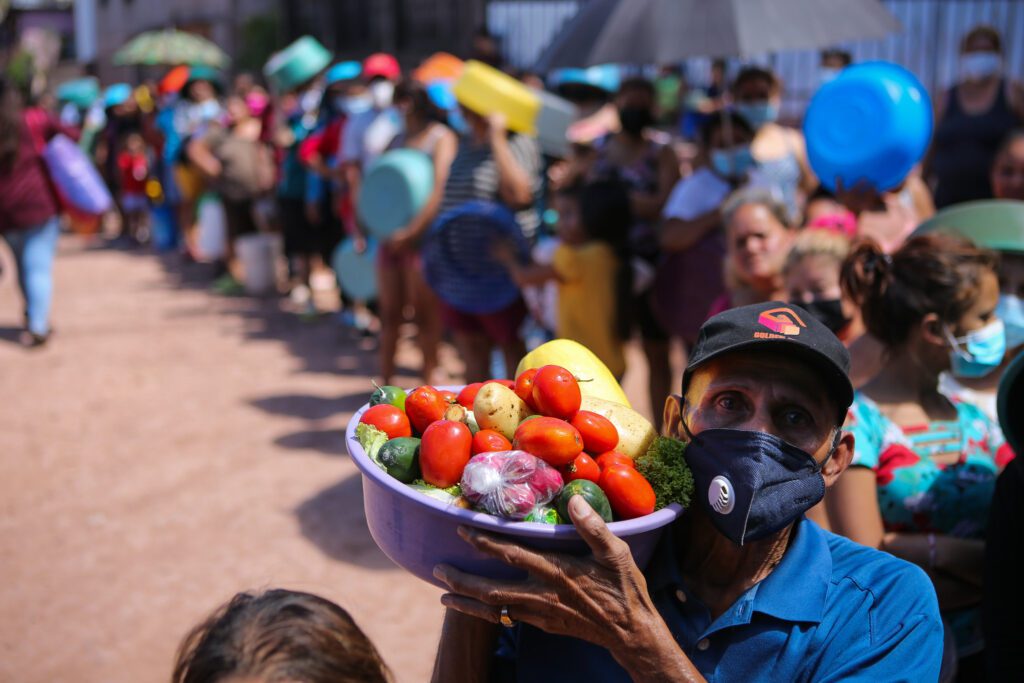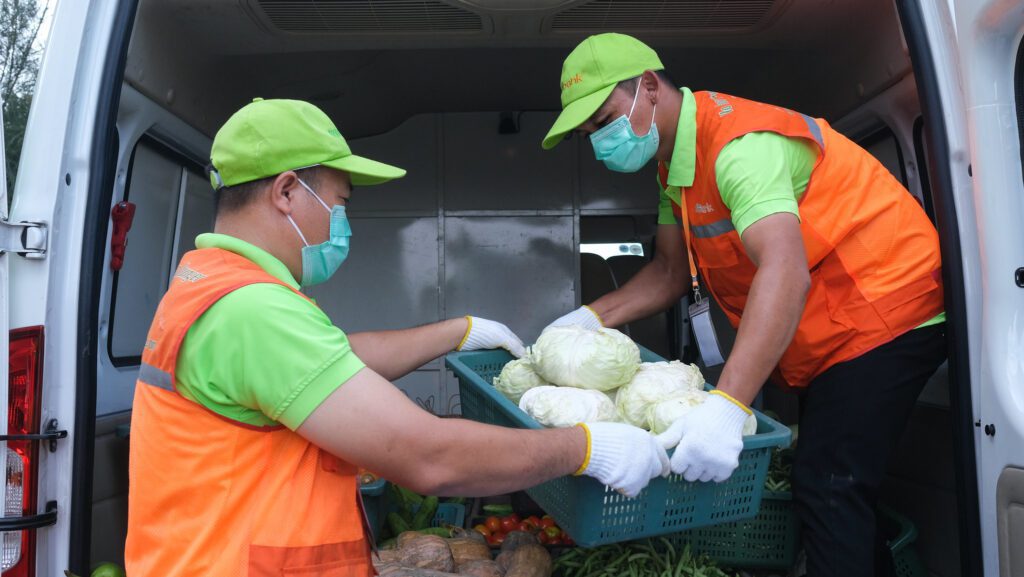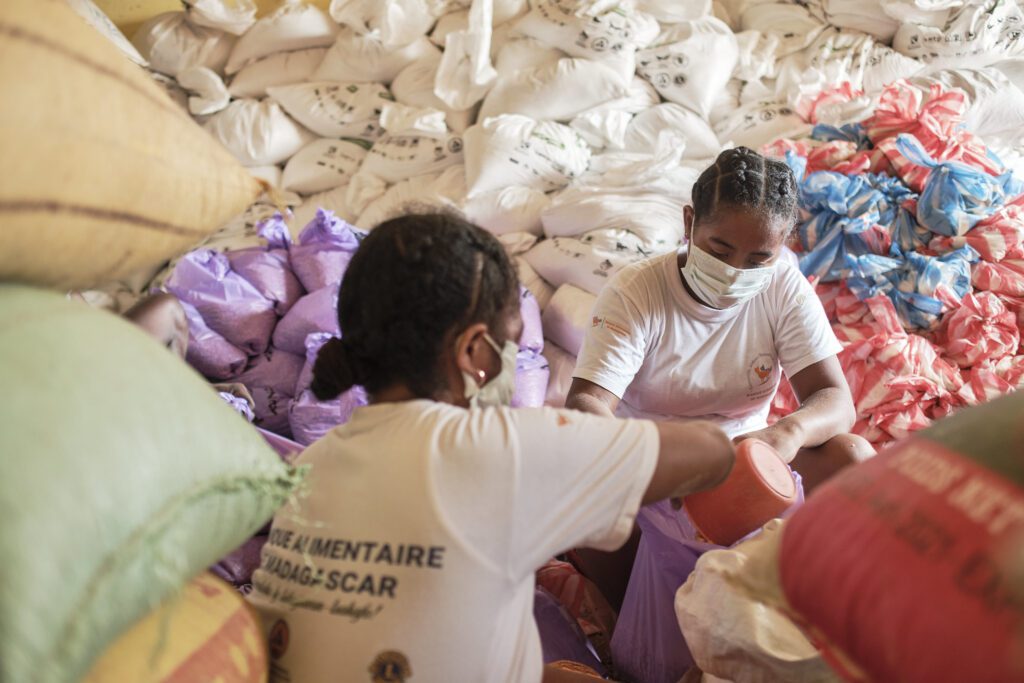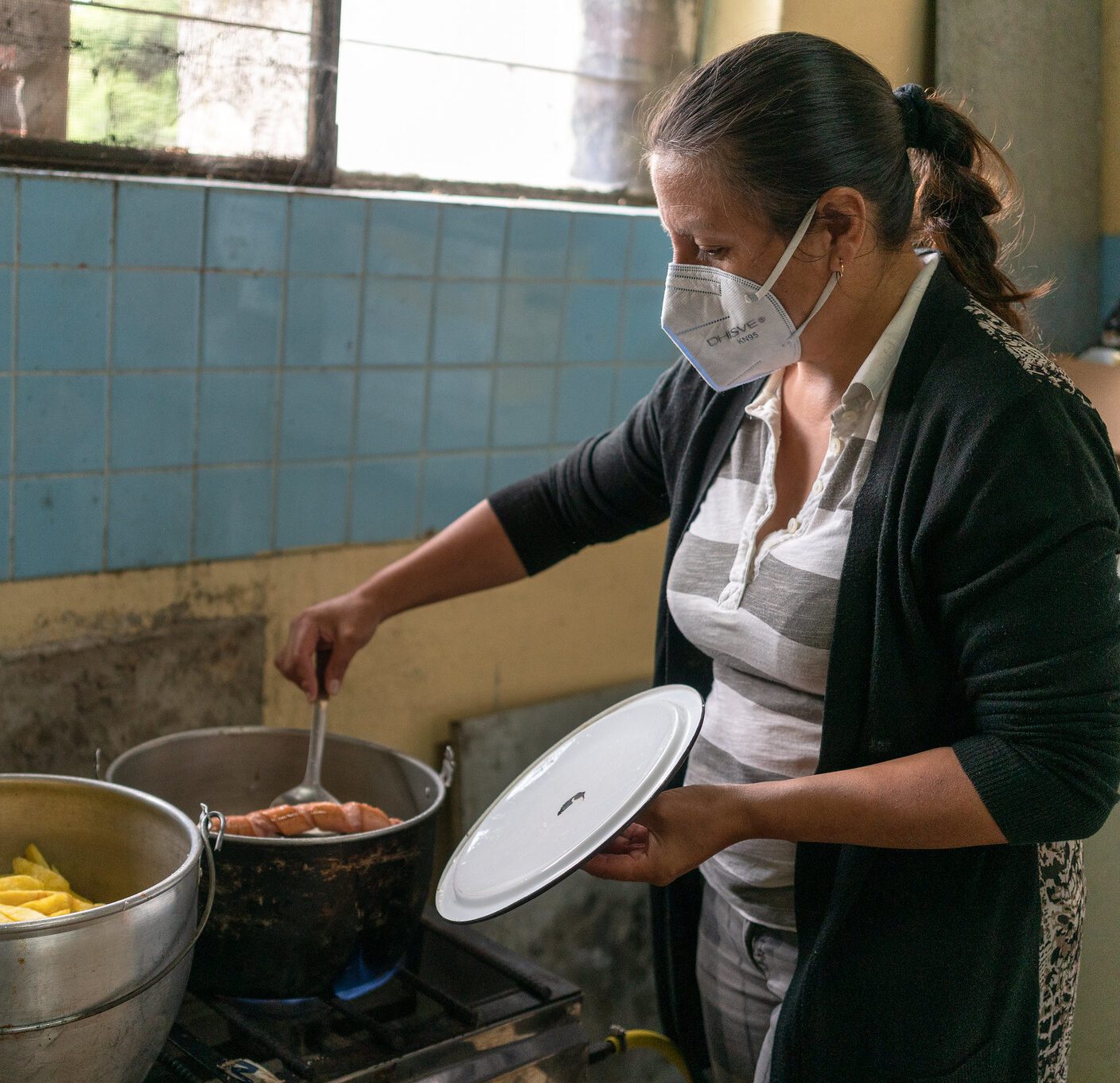Food banks have faced enormous pressure over the last several years, driven by COVID-19, supply chain disruptions, the cost-of-living crisis, and other emergencies. While at least 2.4 billion people faced food insecurity and approximately 735 million people were affected by hunger, GFN members connected 32 million people to food in 2022, nearly double the number of people served by member food banks before the pandemic.
At the same time, more than three-quarters of the countries where GFN members are located experienced at least one climate-related natural disaster in 2022, while 35 percent experienced significant civil unrest. These combined impacts caused food prices to reach record-highs in 2022—leading to severe hardship for vulnerable communities.
As the need for food remains high and many families are turning to food assistance for the first time, food banks are adapting to meet the urgent needs of their communities while building long-term resiliency.
The data presented is collected through GFN’s Network Activity Report and represents food bank member activity from calendar year 2022.

Lisa Moon, CEO & President
The Global FoodBanking Network

In Nueva Suyapa, Tegucigalpa, Honduras, José Godoy receives fresh produce and food supplies from Banco de Alimentos de Honduras. The food bank partners with the social organization Movimiento de Ayuda Social Juan XXIII to distribute food. (Photo: GFN/Delmer Membreño)

In Ho Chi Minh City, Vietnam, staff from Foodbank Việt Nam recover surplus produce from Thủ Đức Wholesale Market in Ho Chi Minh City. The food bank visits the market twice a week and recovers up to a ton of food each time. (Photo: GFN/Hoang Viet Nguyen)

In Tanandava, Amboasary, Madagascar, volunteers with Banque Alimentaire de Madagascar (BAM) help assemble bags of food for distribution. BAM's emergency food aid program increases food access in communities in southern Madagascar with high rates of food insecurity that has been exacerbated by significant drought. (Photo: GFN/iAko Randrianarivelo)

In Quito, Ecuador, Mariela Yánez prepares lunch at Héroes de Vida, an organization that provides education and health services to people with illnesses and physical disabilities. (Photo: GFNk/Ana María Buitron)
Local leaders, partners, and volunteers ensure that a community’s unique needs and cultural contexts are at the heart of food bank operations.
In 2022, members worked with 51,000 local organizations, including pantries, kitchens, and shelters, and were supported by more than 400,000 community volunteers — an increase of 28 percent over 2021.
Doug O’Brien
Vice President of Programs
The Global FoodBanking Network